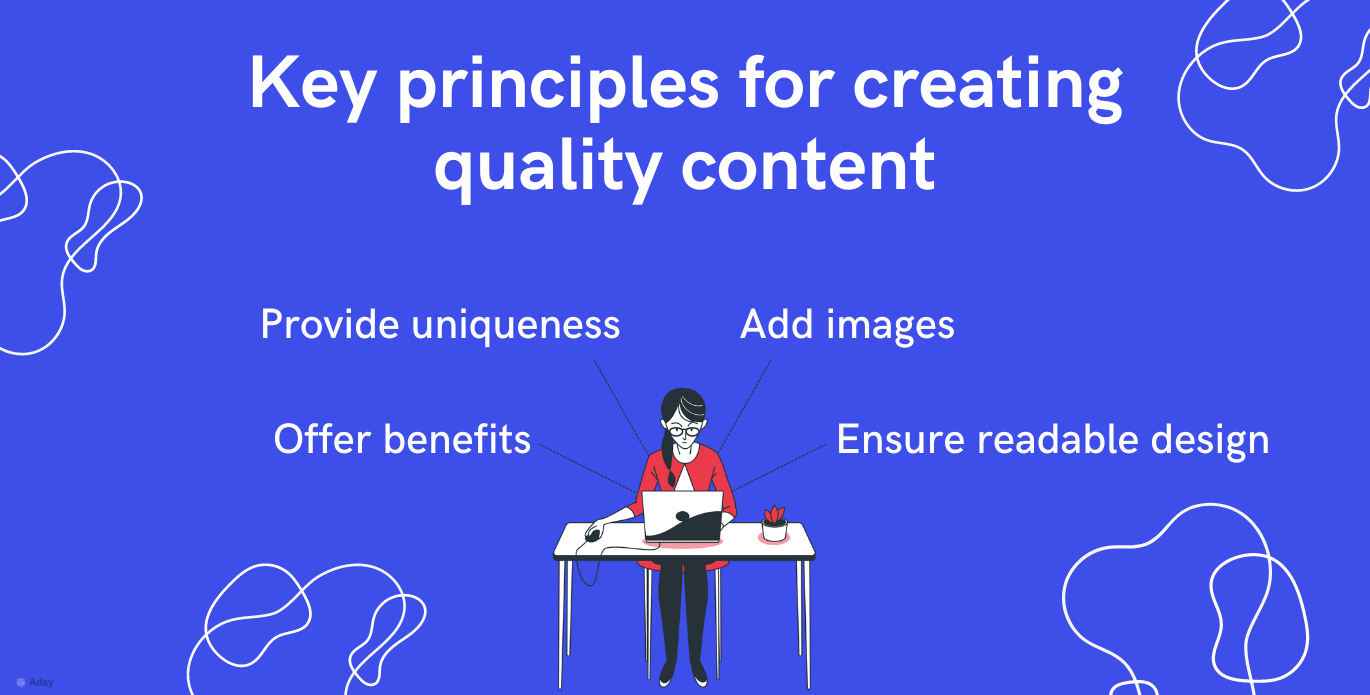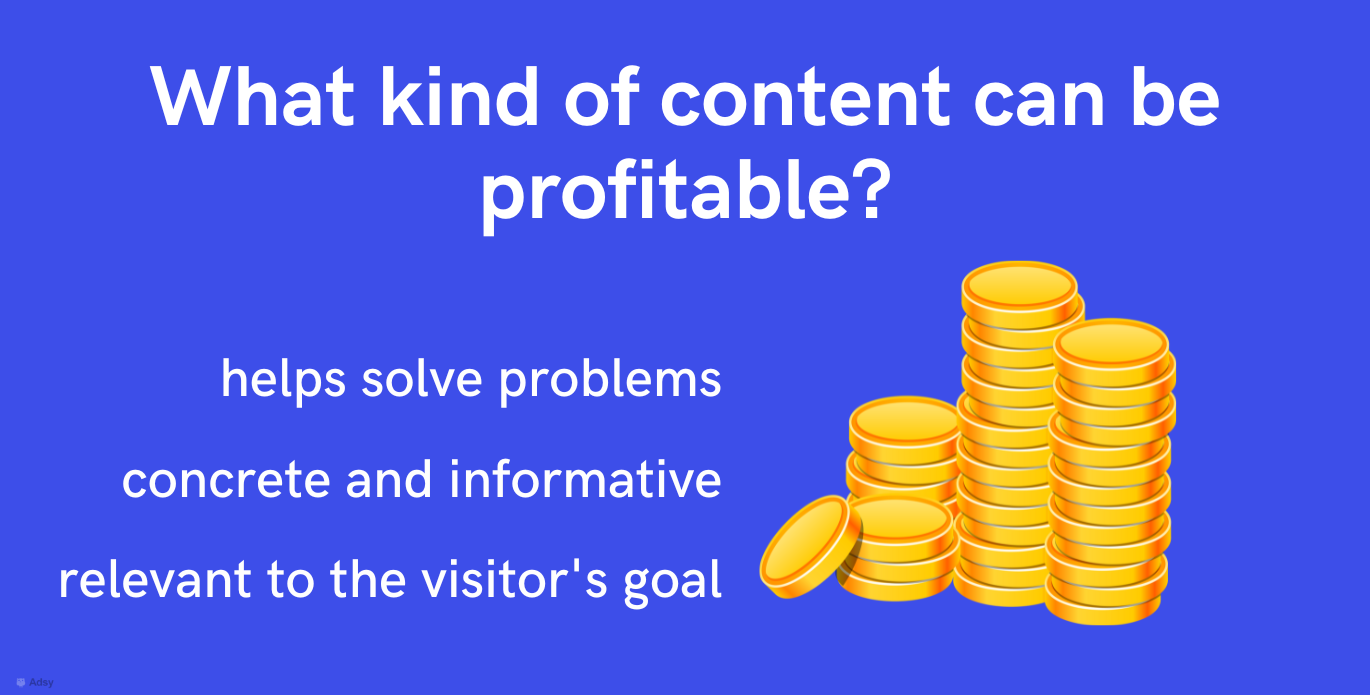How to Create Excellent Content That Brings Profit

Today, the quality of content plays a key role in ranking a site in search engines. And while it's possible to forgive some design mishits, content must always be top-tier. This way, search engines understand that the site rightfully takes place in the search results and responds to search queries.
High-quality and expert texts, excellent presentation of the content will be the key to successful promotion, good behavioral factors, and the desire of visitors to return to the site again and again. And the competent SEO of texts will only strengthen your position
What is the quality of content?
We'd like to give a clear notion of what quality content is. Yet there is no generally accepted definition of this term.
But we all have to refer to this term regularly when talking about search engine optimization. Therefore, we will proceed from our understanding of the content quality. Accordingly, as a basis, we take that quality content is the one we create to serve customers' needs and which helps bring websites to the top.
But we can also define content quality based on what Google values in content to show it on top of SERP. Given that, quality content is:
helpful, reliable information that's primarily created to benefit people, not to gain search engine ranking
So, we highly advise following Google's guidelines and Adsy's content marketingsection to create better content.
Factors that define the quality of content
At first, you might think that the requirements of the SE (search engines) and optimizers are the same but this is not entirely true. Sometimes technologies are unpredictable.
In SEO, it often happens that information on ranking factors and their priority can be obtained from anywhere but not from search engines. Most often, it is derived from SEO specialists' own experience and regular analysis of issuance.
Search engines, of course, periodically reveal ranking factors. Yet sometimes specialists have their own ideas about how to interpret the ranking update.
We have to look for common ground: to select those requirements that are equally important for everyone.
Clients know their business better than optimizers. Nevertheless, their interests may go against the requirements of search engines.
It happens when a client, for instance, cannot post prices on a site, and Google accepts this. Or the optimizer insists on publishing new photos in product cards but the client cannot do this for reasons beyond their control. Plus, the client has their own vision of the site - these expectations also affect the creation of content for the website.
Key principles for creating quality content
The creation of high-quality content is the key task of each Internet source. That's because its primary function is to solve the problems of users, as well as the ability to give a clear explanation of the actions of any algorithm. This content should be not only adequately presented and useful but also unique.

Use practical tips to solve the issue of good site content for both users and search engines once and for all.
1. Provide uniqueness
Update content regularly to ensure it's vibrant and diverse. If the information you provide is engaging, informative, or useful, then the page is highly appreciated by users.
If you do not update the information promptly, provide inaccurate data, or have questionable content, the visitor will quickly lose interest and leave your site.
2. Offer benefits
Most often, all articles and reviews are tailored to the key queries of search engines and, ideally, should fully disclose the selected topic and solve a conceptual request.
Focus your efforts not only on describing the problem and using key phrases but also on the usefulness of the article for users. For the best disclosure of the topic, use all kinds of infographics, images, and videos.
3. Add images
If you want to make the information simple, and understandable, you must correctly present it. And adding images (or, generally, visuals) is a worthy idea.
First of all, users do not start reading the text straight away. Instead, they look at the headers and pictures and then decide whether they want to continue reading the article. As many experts say, a picture is worth a thousand words.
4. Ensure readable design
The main task when creating high-quality content is its correct structure, the use of attractive elements, and competently composed headings.
The user does not always have enough time for in-depth reading of the material, so he selectively looks at the text on the page. If during the cursory study, the reader finds interesting points, he/she will certainly continue reading.
What kind of content can be profitable?

Many content experts define various examples of content when it comes to its profitability. Here, it is worth underlining the following:
One that helps the user solve problems.
It answers the question, provides step-by-step instructions and manuals, and shows photos, and infographics. When writing site content, use the rule of the last click: if after visiting your website, the user does not need to continue searching for information, your material is exhaustively useful.
Concrete and informative.
It is not always possible to write large long-reads and do detailed infographics but such formats usually justify the investment by traffic and leads. Therefore, it makes sense to create them as often as possible.
Relevant to the visitor's goal.
Users are people with their interests and queries. Each of them can put their meaning into the request. The content should satisfy the user's intent. You can learn how to understand and disclose user intent by analyzing search results.
What can you write about?
1. Case studies
If you have achieved success in completing tasks, you can write a useful case study that will help your readers. If the experience was negative, then this may be the basis for writing a helpful anti-case.
2. Visual content
Publish not only text material but also video reviews and infographics. Such content always gets more feedback from visitors.
3. Interviews/expert opinions
Any industry and field of activity needs experts so you can interview an authoritative person in your industry or an expert.
(For example, we've used this format to learn what SEO & marketing experts and business owners think about AI's influence on SEO.)
4. Text formats based on your TA's preferences
If you know your target audience or have a buyer persona, you know their pains. Also, you know what content type they prefer. You may take advantage of this and write about what interests them the most.
5. Informational content
Plans, forecasts, news, and announcements are not always great material but with their help, you can highlight the most important points and interest readers in the topics you need.
6. Comparison articles
Surely you use a large number of programs and services in your work, so why not write about the advantages and disadvantages of each of them, do a comparative analysis, or develop a simple manual for their use?
7. Company stories and news
It is always relevant to write about the company you work in. Surely, you have an interesting story with which you will become even closer to your customers.
8. Updates on your older content
You can also always update old articles with new information and thereby making them even more useful.

Professional steps to perform to create quality content
You also keep in mind a few steps if you want to craft top-class content. Check them out to ensure you create content that brings you value
1. Create ideas for quality content
Your ideas will determine whether the content will be appealing or quickly forgotten. When you develop a compelling approach for content, the target audience not only "absorbs" it but also helps to spread it.
Examine your competitors' sites to find out what type of content works for them in relation to marketing goals.
In any case, no matter what method you choose, most likely, there will be many ideas that can be added to the editorial calendar. It is not necessary to use the same idea or directly address the topic.
2. Do research on your chosen topic
It doesn't matter what type of content (text, video, audio, graphic) you create. Research is essential to be successful.
Even if you plan to write materials based on professional experience, you still need to research the topic. Many experts create content, based on personal experience, only after analyzing if the topic is on-demand. In the end, the article appears on the first page of Google, although it covers a niche and narrow theme.
Explore what others write. If your own ideas differ from what you found during the research, do not be afraid to include them in your content plan. Otherwise, you will not be able to distinguish yourself from others.
3. Choose your own unique style for creating content
Creating original and unique content is not an easy task. It often happens that you create similar content that looks like two drops of water to already published material on the global network.
Carefully think over and plan several distinctive features of your direction to stand out from others.
4. Analyze competitors
In almost any niche, there are already many sites offering their services. It is necessary to understand not only the weaknesses of competitors but also the main factors that make them successful.
You can use the search engine and manually determine the number of views, clicks, and most viewed texts, or use special services.
For example, some online platforms allow you to find the keywords' competitiveness. Be sure to study the demand in your region/city, while even if you have large competitors, you can reach a narrower audience by answering their requests.
Order quality content and place it on authority sites. Instantly boost your traffic and grow brand awareness.
Conclusion
In a world that is full of content, any marketing strategy requires the creation of high-quality content. This is an integral part of any SEO arsenal.
Of course, due to the prevalence of mediocre content, some niches have a greater need for high-quality information than others. You still have the opportunity to create exceptional content in your niche.







